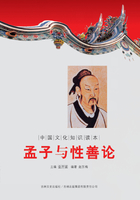EVERYONE knows that that superficial film of the earth's substance, hardly ten miles thick, which is accessible to human investigation, is composed for the most part of beds or strata of stone, the consolidated muds and sands of former seas and lakes, which have been deposited one upon the other, and hence are the older the deeper they lie. These multitudinous strata present such resemblances and differences among themselves that they are capable of classification into groups or formations, and these formations again are brigaded together into still larger assemblages, called by the older geologists, primary, secondary, and tertiary; by the moderns, palaeozoic, mesozoic, and cainozoic: the basis of the former nomenclature being the relative age of the groups of strata; that of the latter, the kinds of living forms contained in them.
Though but a film if compared with the total diameter of our planet, the total series of formations is vast indeed when measured by any human standard, and, as all action implies time, so are we compelled to regard these mineral masses as a measure of the time which has elapsed during their accumulation. The amount of the time which they represent is, of course, in the inverse proportion of the intensity of the forces which have been in operation. If, in the ancient world, mud and sand accumulated on sea-bottoms at tenfold their present rate, it is clear that a bed of mud or sand ten feet thick would have been formed then in the same time as a stratum of similar materials one foot thick would be formed now, and 'vice versa'.
At the outset of his studies, therefore, the physical geologist had to choose between two hypotheses; either, throughout the ages which are represented by the accumulated strata, and which we may call 'geologic time', the forces of nature have operated with much same average intensity as at present, and hence the lapse of time which they represent must be something prodigious and inconceivable, or, in the primeval epochs, the natural powers were infinitely more intense than now, and hence the time through which they acted to produce the effects we see was comparatively short.
The earlier geologists adopted the latter view almost with one consent.
For they had little knowledge of the present workings of nature, and they read the records of geologic time as a child reads the history of Rome or Greece, and fancies that antiquity was grand, heroic, and unlike the present because it is unlike his little experience of the present.
Even so the earlier observers were moved with wonder at the seeming contrast between the ancient and the present order of nature. The elemental forces seemed to have been grander and more energetic in primeval times. Upheaved and contorted, rifted and fissured, pierced by dykes of molten matter or worn away over vast areas by aqueous action, the older rocks appeared to bear witness to a state of things far different from that exhibited by the peaceful epoch on which the lot of man has fallen.
But by degrees thoughtful students of geology have been led to perceive that the earliest efforts of nature have been by no means the grandest. Alps and Andes are children of yesterday when compared with Snowdon and the Cumberland hills; and the so-called glacial epoch--that in which perhaps the most extensive physical changes of which any record remaining occurred--is the last and the newest of the revolutions of the globe. And in proportion as physical geography--which is the geology of our own epoch--has grown into a science, and the present order of nature has been ransacked to find what, 'hibernice', we may call precedents for the phenomena of the past, so the apparent necessity of supposing the past to be widely different from the present has diminished.
The transporting power of the greatest deluge which can be imagined sinks into insignificance beside that of the slowly floating, slowly melting iceberg, or the glacier creeping along at its snail's pace of a yard a day. The study of the deltas of the Nile, the Ganges, and the Mississippi has taught us how slow is the wearing action of water, how vast its effects when time is allowed for its operation. The reefs of the Pacific, the deep-sea soundings of the Atlantic, show that it is to the slow-growing coral and to the imperceptible animalcule, which lives its brief space and then adds its tiny shell to the muddy cairn left by its brethren and ancestors, that we must look as the agents in the formation of limestone and chalk, and not to hypothetical oceans saturated with calcareous salts and suddenly depositing them.
And while the inquirer has thus learnt that existing forces--'give them time'--are competent to produce all the physical phenomena we meet with in the rocks, so, on the other side, the study of the marks left in the ancient strata by past physical actions shows that these were similar to those which now obtain. Ancient beaches are met with whose pebbles are like those found on modern shores; the hardened sea-sands of the oldest epochs show ripple-marks, such as may now be found on every sandy coast; nay, more, the pits left by ancient rain-drops prove that even in the very earliest ages, the "bow in the clouds" must have adorned the palaeozoic firmament. So that if we could reverse the legend of the Seven Sleepers,--if we could sleep back through the past, and awake a million ages before our own epoch, in the midst of the earliest geologic times,--there is no reason to believe that sea, or sky, or the aspect of the land would warn us of the marvellous retrospection.















